Standard [CURRENT]
ASTM E 1958:2022
Standard Guide for Sensory Claim Substantiation
- Publication date
- 2022
- Original language
- English
- Pages
- 32
- Publication date
- 2022
- Original language
- English
- Pages
- 32
- DOI
- https://dx.doi.org/10.1520/E1958-22
Product information on this site:
Quick delivery via download or delivery service
Buy securely with a credit card or pay upon receipt of invoice
All transactions are encrypted
Short description
1.1 This guide covers reasonable practices for designing and implementing sensory tests that validate claims pertaining only to the sensory or perceptual attributes, or both, of a product. This guide was developed for use in the United States and must be adapted to the laws and regulations for advertisement claim substantiation for any other country. A claim is a statement about a product that highlights its advantages, sensory or perceptual attributes, or product changes or differences compared to other products in order to enhance its marketability. Attribute, performance, and hedonic claims, both comparative and non-comparative, are covered. This guide includes broad principles covering selecting and recruiting representative consumer samples, selecting and preparing products, constructing product rating forms, test execution, and statistical handling of data. The objective of this guide is to disseminate good sensory and consumer testing practices. Validation of claims should be made more defendable if the essence of this guide is followed. Table of Contents Introduction Scope 1 Referenced Documents 2 Terminology 3 Basis of Claim Classification 4 Consumer Based Affective Testing 5 Sampling 5.1 Sampling Techniques 5.2 Selection of Products 5.3 Sampling of Products When Both Products Are Currently on the Market 5.4 Handling of Products When Both Products Are Currently on the Market 5.5 Sampling of Products Not Yet on the Market 5.6 Sample Preparation/Test Protocol 5.7 Test Design-Consumer Testing 6 Data Collection Strategies 6.6 Interviewing Techniques 6.7 Type of Questions 6.8 Questionnaire Design 6.9 Instruction to Respondents 6.10 Instructions to Interviewers 6.11 General/Overall Questions 6.12 Positioning of the Key Product Rating Questions 6.13 Total Test Context and Presentation Matters 6.14 Specific Attribute Questions 6.15 ...
ICS
67.240
DOI
https://dx.doi.org/10.1520/E1958-22
Also available in
Loading recommended items...
Loading recommended items...
Loading recommended items...
Loading recommended items...

